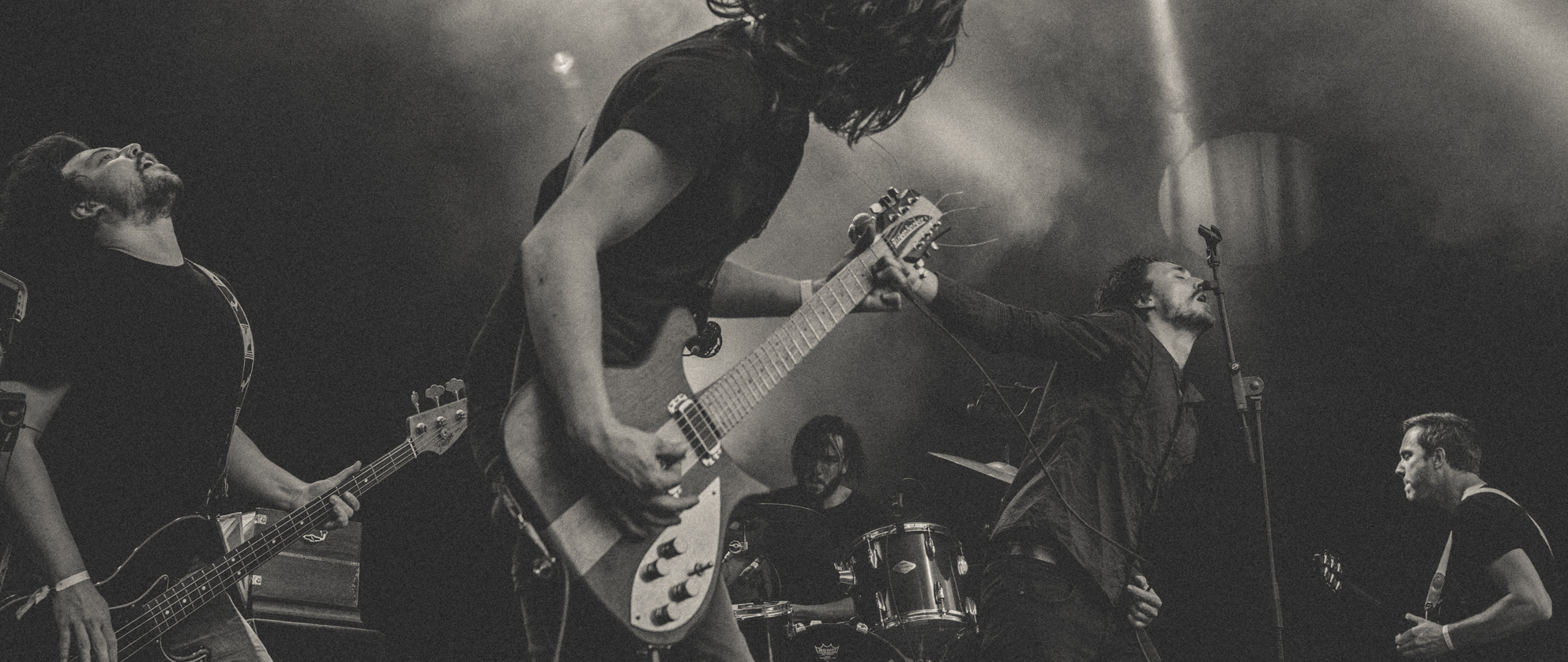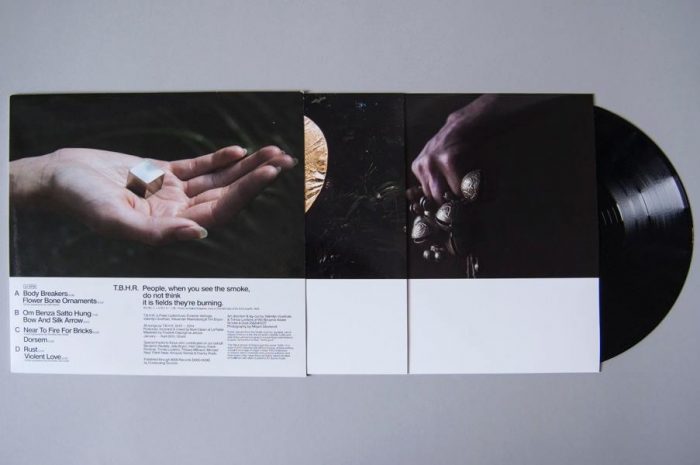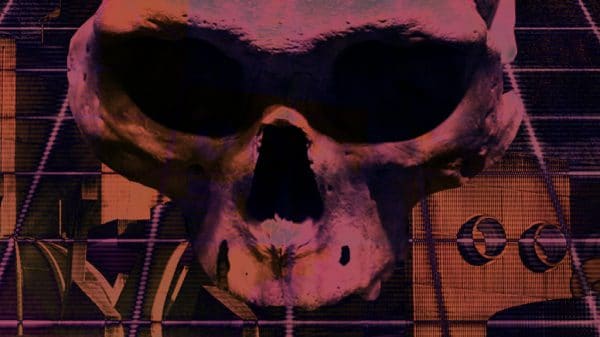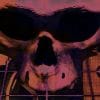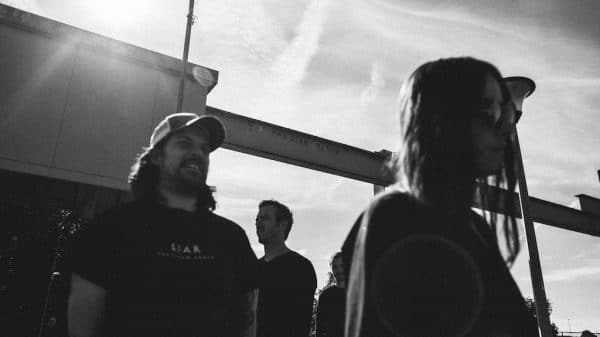The Black Heart Rebellion – LP is Out Now Consouling Sounds
Looking at the discography of The Black Heart Rebellion (TBHR), it would appear that this is a relatively new band. With just three full-lengths and three split releases under their belt, the band from Belgium has quite an interesting story. Their inception actually occurred back in 2004, making this band more than a decade old, at which point their roots were solidly embedded within the hardcore domain. However, TBHR were quite adventurous with their sound. In 2008, the band released their debut album, Monologue, following down a dark post-rock path while paying tribute to their hardcore history. The album was solid, but I would not call it something extraordinary. It did, though, reveal the potential of TBHR.
Har Nevo came in 2012, the reason being a hiatus that the band decided to go through. That break seemed to have really worked for them, giving them time to reflect on their music and plan their next steps. The album did carry the dark vibe found in the heart of this band, but this time around the post-rock quality gave way to something much more interesting. The music itself does once again find its origins in the hardcore realm, however, the focal point in Har Nevo was the tribal, ritualistic, dark folkish tone. That is the point of origin for People, when you see the smoke, do not think it is the fields they’re burning.
Even though folk or neo-folk is probably not the best way to describe (at least fully) the sound of TBHR in People, when you see the smoke…, it does become a big part of the album. The clean guitars in “Body Breakers” feature such a tonality, granting an interesting sense of movement. Similarly, the intoxicating quality of “Bow and Silk Arrow” sees the band taking us through an ancient rite of passage, with that mystical element acquired in large part by the guitars. At other points, this aspect might be restricted to the background, as is the case with the opening song, adding more depth to the music and giving a more magical characteristic to its unfolding. But, there is also that slight neo-folk twist, as is the case with “Flower Bone Ornaments,” even though it does not feature the more adventurous aspect of the genre. The dissonant elements of “Dorsem” and their piercing quality, along with the underlying tendencies of “Rust” are a couple more occasions where the vision of TBHR is further expanded and wonders in those domains.
What is so cool about TBHR is that it is inherently difficult to pinpoint them to a specific genre, or even a specific type of sound. As big a part as the dark folk tones might play in their music, you cannot simply call them a folk band. In the same way, no matter how important the ambient side of the band is, you cannot just call them an ambient band. Ambiance plays a big role in People, when you see the smoke. Usually, it is not warm and welcoming. In the case of “Rust,” the scenery is dark, cold and destructive, reaching a towering nature when the distortion becomes overwhelming, leading to the development of hallucinations. Similarly, “Violent Love” does not have a much friendlier approach, with the mystical character of the track overflowing and the melodic lines creeping up in the process. “Om Benza” gets on a minimalistic path, building up slowly towards a more horrific and imposing atmosphere, aided by the wailing drones and bursts of percussion.
With “Om Benza” it is actually the sort of abstract approach that allows for such a moment to develop. The ritualistic presence is felt in all its glory with that one, something that is a very important trait of TBHR. In a similar vein, “Violent Love” leads on with its minimalistic approach, which at this time has something very ceremonial-like about it. The way the track evolves gives you a sonic image of a long forgotten ceremony taking place. On its more magical and mystical, this side of the band is awakened in “Near To Fire,” with the minimal style and sorrowful tonality absolutely captivating. The vocals, both male and female give a much sweeter tone to the track, managing to give it a more approachable, and not as dark and damned, quality.
Still, what is dominant here is neither the folk quality or the ambient side. It is the tribal feel of TBHR. Now, that was already apparent in Har Nevo, but this time around it has been enhanced. The opening track features a strange choice of percussion, but the effect that it has is tremendous. The pace and vibe that TBHR select in this case is fairly straightforward, relying on some repetitive patterns to give more intensity to their sound. The case is similar with “Flower Bone Ornaments,” but this time there seems to be a more primal aspect being evoked through the percussion, as is the case with “Rust” and its more violent and direct approach, with the band really embracing their darkness in this case. Even more twisted and menacing is the methodology they are undertaking in “Om Benza,” with the faster pace creating a great contrast to the rest of the track, soon leading it into a frenzy of sorts. On the other hand, the band still lets a cooler, more distant attribute of their tribal self to be brought forth in “Dorsem,” acting more like the glue of the track. It works great, with the melodic lines at the start of the track having an absolutely haunting quality, while the more aggressive vocal delivery shows a hungrier, blood-thirsty face.
It comes down to having the right combination of approaches. Apart from the construction of ambiance, the dark folk element and the tribal vibe, People, when you see the smoke… is a very melodic album, filled with interesting hooks and memorable lines. That is not just the prerogative of the guitars in this album. The vocals are of equal importance in getting the track in the right mood. But, it also has to do with the amount of weight that is found in the album. Even though the hardcore self of TBHR seems to be fading in the background, that does not mean that there are not instances when it comes front and centre. The bass is the primal source of heaviness and depth in most of the tracks, with the drums also bringing in a lot of power, as well as the distorted guitars creeping in at instances, as is the case with “Bow and Silk Arrow,” pushing the track over the top.
People, when you see the smoke… is not as a massive change compared to Har Nevo. At least not of the same degree that the change from Monologue to Har Nevo was. However, TBHR are growing more adventurous with their sound, they are trying new things and trying to fit more musical aspects in their structures. They are pushing the boundaries and keeping their sound fresh.

